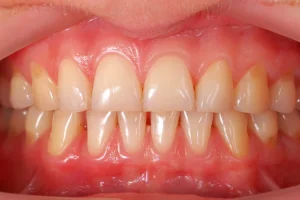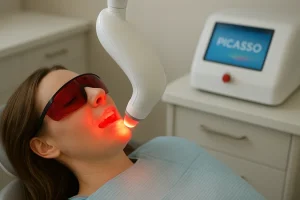Understanding Root Canal Treatment: When It’s Necessary and What Your Options Are

Understanding Root Canal Treatment: When It’s Necessary and What Your Options Are
Root canal treatment is one of the most common and effective procedures in dentistry, yet it continues to be misunderstood and, for some, feared. At Fort York Dentist, we believe in educating our patients so they can make informed decisions about their oral health. Whether you’re facing the possibility of needing a root canal or you’re simply curious about what the treatment involves, this guide will help you understand when a root canal is necessary, what it entails, and what your options are if you choose not to have one.
What Is a Root Canal?
A root canal is a dental procedure designed to treat infection or inflammation inside the tooth. Every tooth contains a soft tissue called the pulp, which is housed in the root canals. The pulp contains nerves and blood vessels, and when it becomes infected due to deep decay, trauma, cracks, or repeated dental procedures, it can cause pain and lead to more serious complications if left untreated.
During a root canal procedure, the infected or inflamed pulp is removed, the inside of the tooth is carefully cleaned and disinfected, then filled and sealed with a biocompatible material. Often, a crown is placed afterward to restore the tooth’s strength and function.
When Is a Root Canal Necessary?
There are several signs and conditions that may indicate the need for a root canal:
- Persistent pain when chewing or applying pressure
- Lingering sensitivity to hot or cold
- Swelling or tenderness in nearby gums
- Darkening of the tooth (a sign of internal damage)
- Pimple-like bump on the gums (can indicate infection)
- Deep decay reaching the pulp
- Cracked or broken teeth that expose the nerve
However, not all root canals come with obvious symptoms. Sometimes, a tooth can be asymptomatic yet still have underlying issues. This brings us to a very important point:
Hidden Infections: When a Tooth Needs a Root Canal Without Pain
Many patients are surprised to learn that a tooth can be severely infected or even have a dead nerve without causing any pain. These “silent” infections are often only detected through routine dental X-rays or exams.
In some cases, the nerve inside the tooth dies slowly, causing no discomfort at all. But once the pulp is necrotic (dead), bacteria can thrive inside the canal, potentially leading to bone loss or abscess formation. This is why regular dental checkups and imaging are so crucial—they help us catch these hidden problems before they lead to more serious complications.
Why You Might Need a Root Canal After a Filling
One of the most common concerns we hear from patients is:
“I didn’t have pain before the filling, but now I do—why?”
This scenario usually involves a deep cavity that required an extensive filling close to the nerve. Even if you weren’t in pain before, the decay may have already irritated or compromised the pulp. Removing the decay and placing the filling can sometimes trigger inflammation or worsen an already fragile nerve, resulting in pain afterward.
In these cases, the tooth may need a root canal to remove the inflamed or infected pulp and relieve the discomfort. While we always aim to preserve the tooth with a filling alone, sometimes the depth and location of decay make root canal treatment unavoidable.
What Are Your Options If You Don’t Want a Root Canal?
We understand that some patients may feel uneasy about having a root canal or may be exploring other options. Here’s a breakdown of alternatives:
1. Tooth Extraction
The most common alternative to a root canal is removing the tooth entirely. While this might seem like a quick fix, a missing tooth can lead to:
- Shifting of surrounding teeth
- Bite misalignment
- Bone loss in the jaw
- Difficulty chewing or speaking
After extraction, it’s important to replace the tooth. Options include:
- Dental Implants – A permanent and natural-looking replacement
- Bridges – Fixed prosthetics that use adjacent teeth for support
- Partial Dentures – A removable solution, though less ideal for long-term function
2. Pulp Capping
In select cases—usually with young patients or minor pulp exposure—your dentist may attempt a pulp cap. This involves applying a protective material over the exposed pulp to try and preserve the nerve. However, this is not always successful and may only delay the need for a root canal.
3. Doing Nothing (Not Recommended)
Leaving the tooth untreated when a root canal is needed is not advised. An infected tooth will not heal on its own and can lead to:
- Increased pain
- Facial swelling
- Spread of infection to the jaw or bloodstream
- Tooth loss
The longer the condition is ignored, the more complex—and costly—the treatment may become.
Why Root Canal Treatment Is Often the Best Option
While extraction may seem like the easier path, saving your natural tooth is almost always the better choice. A successful root canal treatment allows you to:
- Keep your natural tooth
- Maintain proper chewing and alignment
- Avoid the costs and risks of tooth replacement
At Fort York Dentist, we use advanced techniques and modern anesthetics to make root canal treatments as comfortable and stress-free as possible. Most patients report that the procedure feels no different than getting a regular filling.
Final Thoughts: Don’t Delay Treatment
Root canal treatment has a long-standing reputation, but today, it’s a safe, efficient, and pain-relieving solution. If you’re experiencing symptoms—or even if you aren’t—routine dental checkups are key to catching problems early.
At Fort York Dentist, we’re here to help you protect your smile with compassion, expertise, and personalized care. If you have questions about your tooth, your options, or want a second opinion, we invite you to book a consultation with our friendly team today.









